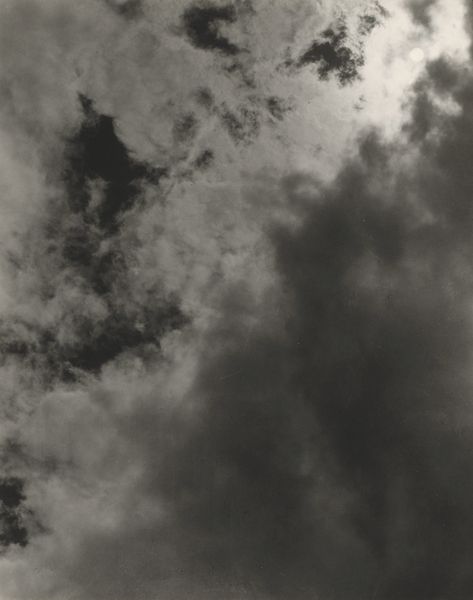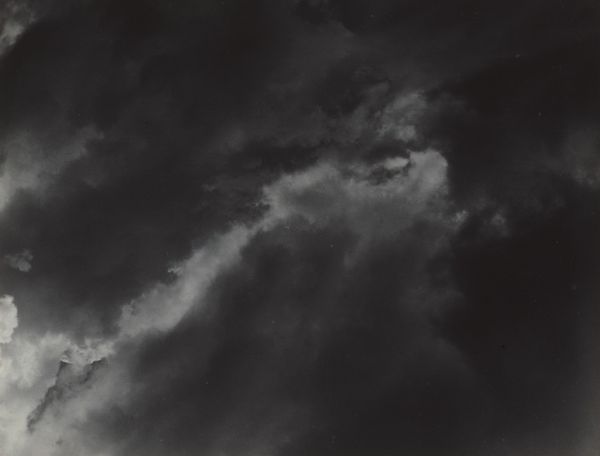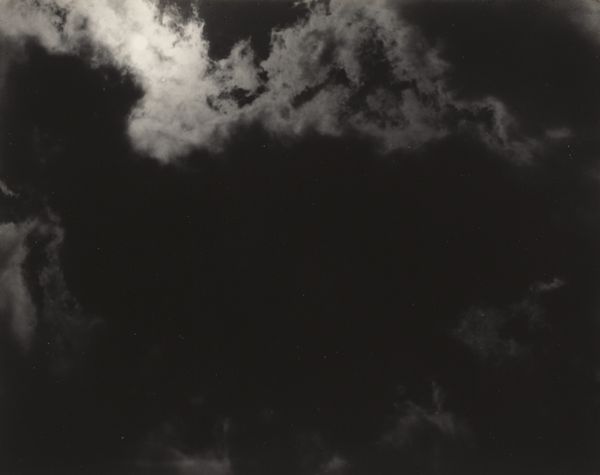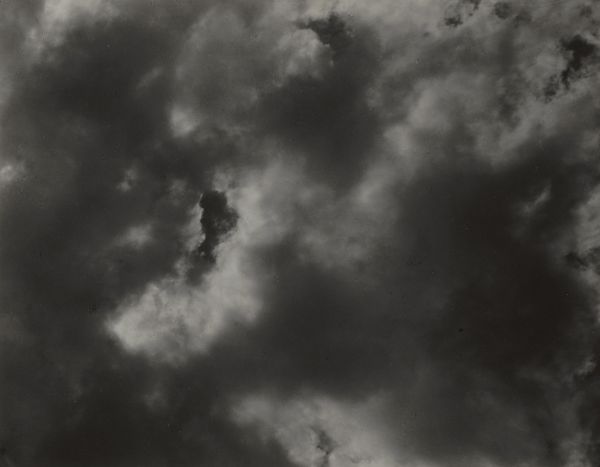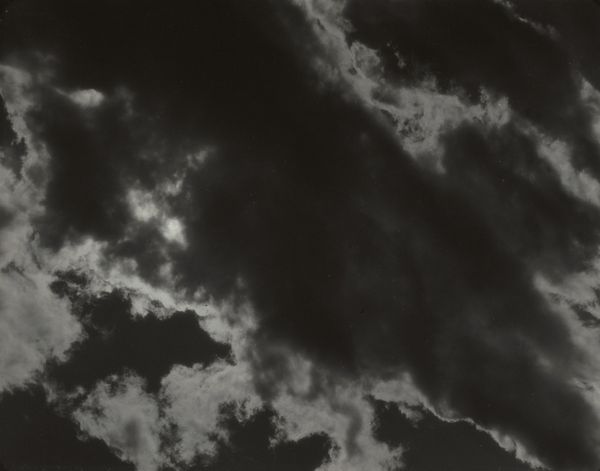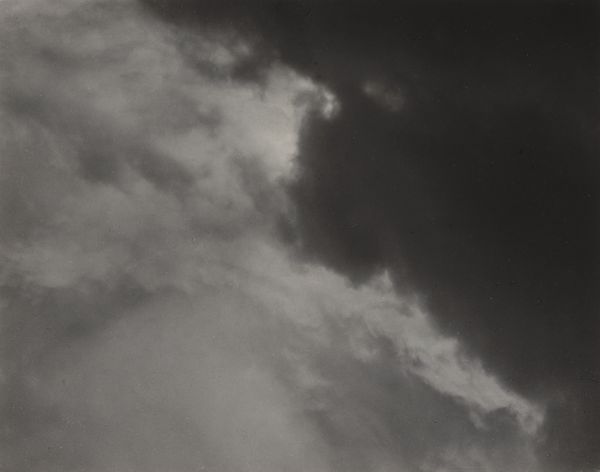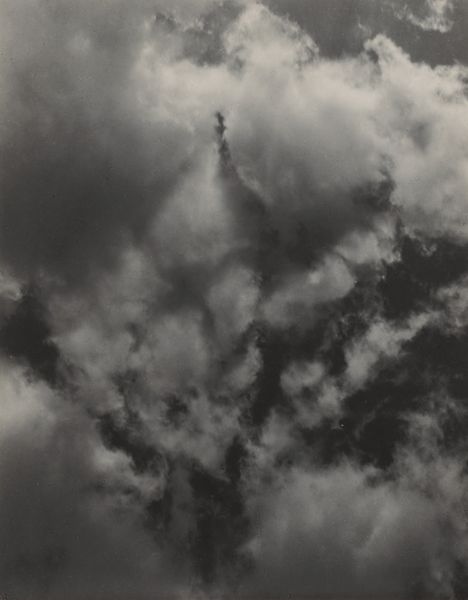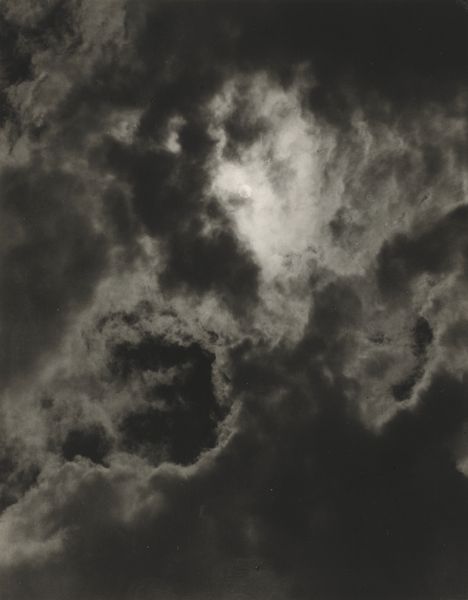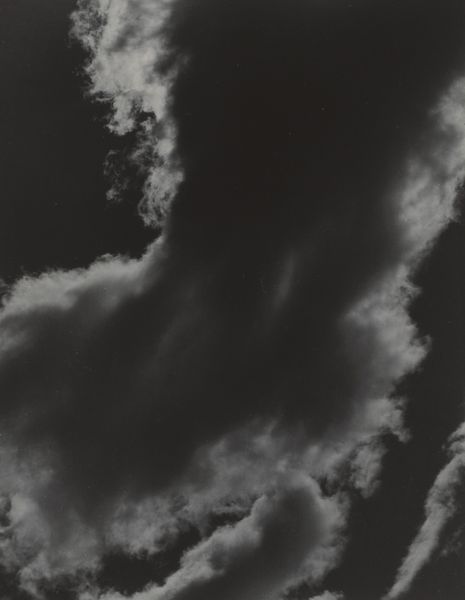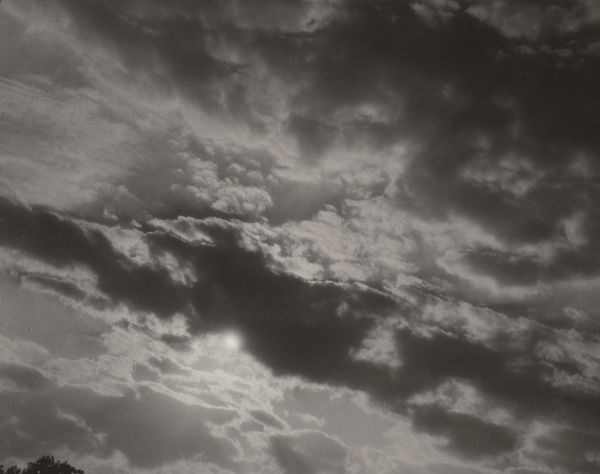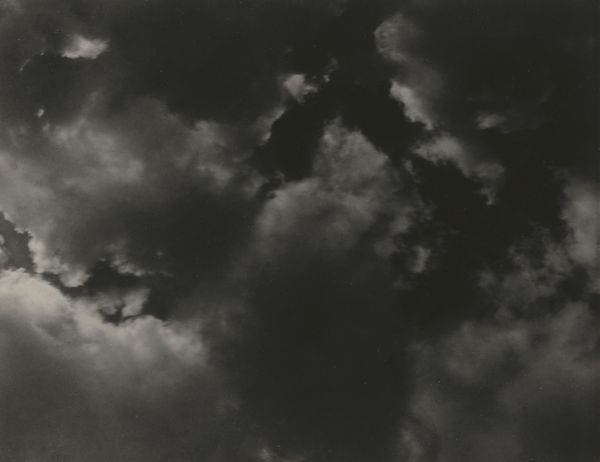
photography
#
cloudy
#
snowscape
#
pictorialism
#
landscape
#
photography
#
low atmospheric-weather contrast
#
sky photography
#
monochrome photography
#
gloomy
#
fog
#
skyscape
#
mist
#
monochrome
#
shadow overcast
Dimensions: sheet (trimmed to image): 11.8 x 9.2 cm (4 5/8 x 3 5/8 in.) mount: 34.3 x 27.5 cm (13 1/2 x 10 13/16 in.)
Copyright: National Gallery of Art: CC0 1.0
Editor: This is "Songs of the Sky or Equivalent," a series of photographs made by Alfred Stieglitz between 1923 and 1929. Just looking at it, there's a certain ambiguity—it's clearly a photograph, but the monochrome and focus on cloud formations almost abstracts the subject. What strikes you most about this work? Curator: What fascinates me is Stieglitz’s conscious elevation of photography, a medium often relegated to documentation, into high art. Consider the societal context: photography was rapidly becoming democratized through mass production. By focusing solely on the sky, seemingly devoid of human presence or direct commercial value, he reclaims artistic authority, emphasizing the photographer's eye and darkroom technique – the labor, really – as crucial components of artmaking. Do you see how this challenges traditional hierarchies? Editor: I think so. He's using the materials of mass culture, photography, but trying to pull it away from its everyday use. So it's almost like a…rebellion? Curator: Exactly! He uses photography, a medium tied to industrial production, to create what he calls "equivalents"— images that represent internal states rather than objective reality. We have to ask: what materials were available? How accessible were they, and for whom? These questions shape our understanding. How might the economic pressures of the time have influenced his choices? Editor: Perhaps the limitations of available materials or the rise of mass media pushed him to experiment more with form and subjective expression? I’d never really considered it that way. Curator: Precisely. It encourages us to look beyond the aesthetic beauty and towards the socio-economic conditions of artistic production. By considering how material constraints shaped the creative process, we see a richer, more complex narrative. Editor: This really shifts my perspective. Seeing it in terms of materials and production adds another layer. Curator: Indeed, understanding art through its material conditions allows us to move beyond mere appreciation, prompting critical reflection on the dynamics of art, labor, and consumption.
Comments
No comments
Be the first to comment and join the conversation on the ultimate creative platform.
